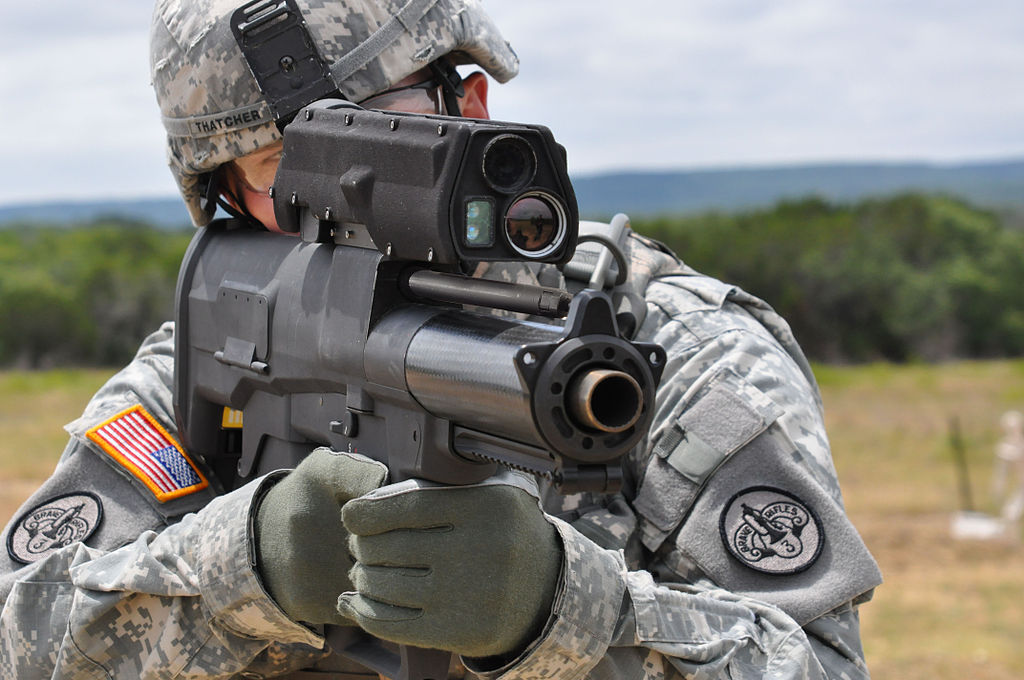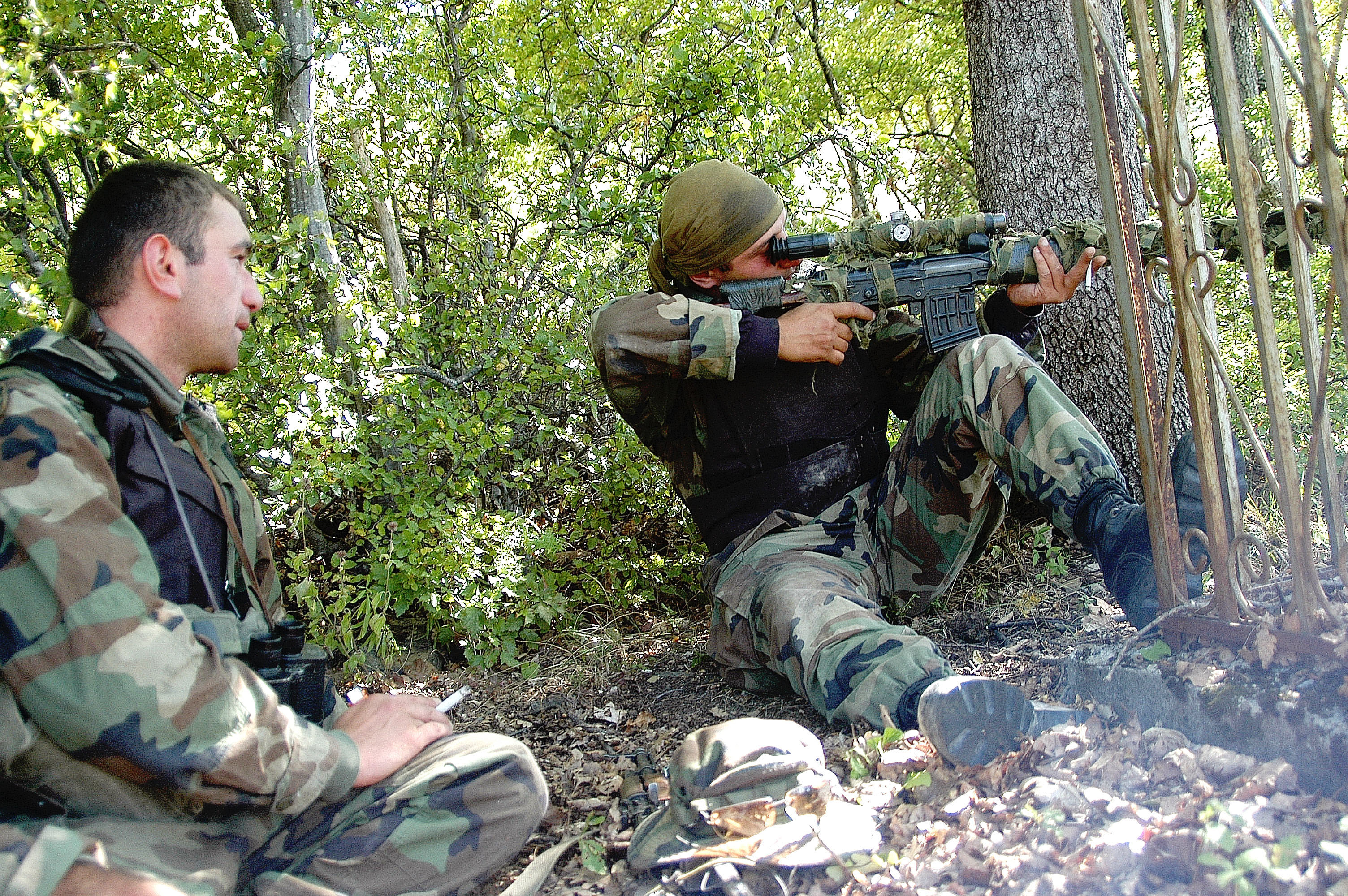In a 2012 article, US Navy Admiral Jonathan W. Greenert wrote “future wars will not be won simply by effectively using the EM spectrum and cyberspace; they will be won within the EM-cyber domain.”
With new technologies and new advances in high-tech manufacturing, the very fundamentals of warfare since the dawn of the contemporary world are being revised.
Computerized weapons, programmed rifles and combat robots are already in common use, adding another layer of complexity to military strategy. Disruption is replacing destruction, and anti-access capabilities are competing with firepower. Bullets may even be a thing of the past in less than 20 years as computer viruses, high frequency lasers and autonomous droves increasingly sideline talks of ballistic missiles.
Combat use of electromagnetic weapons can be traced back to the late days of the Cold War, when the idea of a high altitude atom bomb was being discussed. Today, an electromagnetic pulse (EMP) could fry all electronic and communication devices. Whole networks could be rendered powerless in a single attack. In 2015, U.S. Air Force confirmed the existence of Boeing’s electromagnetic pulse weapon, a device “capable of targeting and destroying electrical systems without the collateral damage often associated with traditional firepower.” Meanwhile, Lockheed Martin’s new laser weapon has demonstrated its capability to destroy a truck’s engine from a mile away. Lockheed Martin Chief Technology Officer, Keoki Jackson argues “fiber-optic lasers are revolutionizing directed energy systems.”
The technological answers to these emerging securities continue to completely redraw the fundamentals of warfare. The Active Denial System, or the ray gun, for instance, is a heat concentrator, creating unbearable heat waves that can neutralize any soldier on the ground. Israel, for instance, has had a few running for about half a decade. The “Thunder Generator” is “a crowd control armament that was originally developed to scare birds away from fields of grain.” While the taser which has been a regular companion to police forces, it is being updated by militaries all over the world, mostly in China.
Autonomy and integration, the keywords of future success:
Against a fast developing array of cyber weapons, physical armaments, either in the form of rockets, tanks, guns or ammunition, are increasingly called into question. Technological advancement is making every weapon more akin to a small computer. Will future adversaries be able to disable computerized guns?
Weapons of the future will be interconnected to a combat grid, whose access and defense itself will effectively mirror the battlefield. The Last Gulf War of 2003 illustrated how infrastructure had become the new classical military targets. The next large-scale engagement is likely to commence with computer viruses and massive power shutdowns. Special Operations Forces Industry Conference in 2016 tried to test some ideas concerning this multi-layered battlefield of the future by introducing Augmented Reality, a technology that “basically takes a real-world image and layers it with a computer-generated one.“
Apart from blurring the lines between combat reality and virtual reality, the implicit devolution of decision making to thinking machines able to compute more time sensitive information is making new autonomous weapons much more frightening. The United Nations, in a four-day conference, addressed this on May 13, 2016, in Geneva, describing them as “the imminent future of conflict, and advised an international ban.
This sort of autonomy is already History. At a keynote address at the annual meeting of the International Committee for Robot Arms Control (ICRAC) in April 2016, the head of ICRC Arms Unit Kathleen Lawand made a case for autonomous weapon systems systems. Lawand mentioned to participants “the development of autonomous weapons systems has profound implications for the future of warfare.” She believes that the central issue that remains is the potential absence of human control over the critical functions of identifying and attacking targets, including human targets. Lawand argues a “deep sense of deep discomfort with the idea of allowing machines to make life-and-death decisions on the battlefield with little or no human involvement.”
Lessons from History?
The current situation offers a gloomy parallel with World War II, when European powers engaged in a worldwide conflict with very little knowledge of the actual power of their technologies. Governments were in no way capable of predicting the amount of destruction their new technologies would inflict. Future large-scale conflicts bear the same risk, especially due to the enormous speeds with which today’s firms are able to innovate.
Lt. Gen. H.R. McMaster, Consulting Senior Fellow at the International Institute for Strategic Studies, offers a reminder to military leaders: “Military professionals should be particularly skeptical of ideas and concepts that divorce war from its political nature and promise fast, cheap, and efficient victories through the application of advanced military technologies.”
Photo: A soldier aims an XM25 weapon system at Aberdeen Test Center. Courtesy of U.S. Army, Flickr.
Disclaimer: Any views or opinions expressed in articles are solely those of the authors and do not necessarily represent the views of the NATO Association of Canada.




